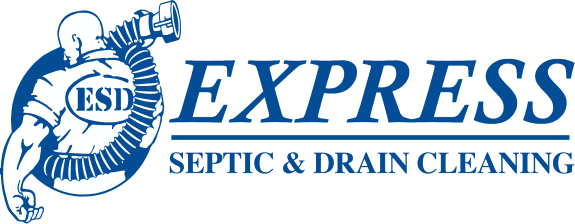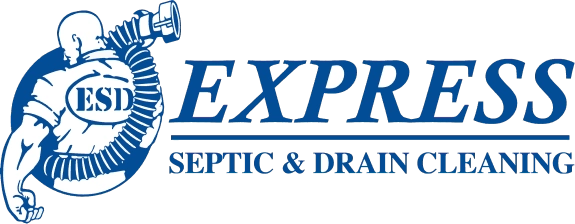All About Septic Leach Field Rejuvenation
A septic system is a crucial component of any property that operates without a connection to a centralized sewer system. The leach field, also known as the drain field, is an essential part of the septic system. Its responsibilities include filtering and cleaning wastewater before it is released back into the environment and groundwater supply. Over time, your leach field can become clogged, leading to decreased performance and potential failure of the septic system. To avoid these costly and inconvenient problems, it is essential to periodically rejuvenate your leach field to ensure that it’s functioning at optimal levels.
How Does a Leach Field Work?
In a typical leach field, wastewater from your septic tank is distributed through a network of pipes into beds of gravel or crushed stone. The wastewater then infiltrates the soil, where naturally occurring bacteria break down pollutants and impurities that might otherwise infiltrate and contaminate your groundwater supply. Purified water is then absorbed into groundwater while the remaining solids are broken down by microorganisms in the soil. The process of wastewater purification in a leach field is critical for maintaining the health and safety of the environment, and it is essential that a leach field functions properly to prevent contamination and other issues.
Leach Field Lifespan
The lifespan of a leach field varies greatly depending on several factors, such as the size of the field, the type of soil you have, the amount and type of wastewater coming from your system, and the frequency of maintenance performed. On average, a well-designed and properly maintained leach field can last anywhere from 20-30 years. However, in some cases, a leach field may only last a few years, or even less, with improper maintenance or heavy use. To extend the lifespan of your leach field and prevent failure, it is important to have regular inspections, to avoid overloading the system, and to address any issues or problems as soon as they arise. Regular leach field rejuvenation can also help ensure the longevity and performance of the field.
Leach Field Failure Causes
Leach fields can fail to perform as intended for a variety of reasons. Some of the most common causes of leach field failure include:
Overloading
Excessive wastewater and high water usage can quickly overload your leach field, leading to a faster breakdown of the soil and clogging of filtration pipes. Slow leaks in plumbing, running faucets and toilets, and other high-volume situations can quickly saturate your leach field and lead to a breakdown.
Soil Compaction
The soil in your leach field can become compacted and bogged down with sediment and debris, reducing its overall ability to filter and purify wastewater. The wastewater then slides off this matted mess and into the groundwater supply, contaminating it with bacteria and microorganisms that can cause health consequences for you and your loved ones.
Clogged Pipes
The presence of non-biodegradable materials, such as grease, baby wipes, and sanitary napkins, can accumulate in your drain pipes and create blockages. Poor system design such as improper slope and narrow pipe openings can also contribute to system failure. Other potential obstructions, such as tree roots, can quickly overtake leach field pipes and make it nearly impossible to drain your field correctly.
Poor Design
If your leach field was not properly designed or constructed, it may not perform as intended, leading to premature failure and the need for ongoing repair and replacement. Leach field replacement is a costly venture; doing what you can to properly maintain your field and service minor issues will help prevent larger problems from draining your pocketbook.
Failure to Maintain
Regular maintenance and inspection of your leach field are crucial for its longevity and performance. Failing to properly maintain your system can lead to leach system problems that are significant and costly.
In a perfect world, your septic system would not allow any solids to travel out of the septic tank and into your leach field. Over time, these solids do make their way through your outgoing baffle and into the drains of your field. This obstructs the flow of water into the layer of gravel designed to purify your water supply. Leach field rejuvenation removes such buildup.
Leach Field Rejuvenation Process
Leach field rejuvenation is the process of restoring the performance of a clogged or failing leach field. This process typically involves steps that need to be performed by septic professionals to ensure that everything is draining as intended.
Inspection
Septic system professionals will perform a detailed inspection of your leach field to determine the exact cause of the problem and assess the extent of clogging and damage that have taken place.
Pipe Clearing
Clogged pipes in the leach field will be cleared of any solids, roots, and other organic materials to restore proper flow to your field. Broken pipes will be replaced, and the entire system will be tested to ensure proper flow and drainage to avoid contamination of your groundwater supply.
Soil Aeration
Compacted soil is a leading cause of leach field breakdown; impenetrable chunks of topsoil cause wastewater to run across rather than through, causing widespread contamination of soil and water samples. The soil in your leach field will be aerated to improve the flow of wastewater into the soil and enhance the filtration and purification process.
Adding Beneficial Bacteria and Nutrients
Specialized combinations of bacteria and other nutrients may be added to your leach field to improve the performance of the soil and enhance the breakdown of pollutants and impurities, moving them through your field efficiently.
Ongoing Monitoring and Maintenance
Regular monitoring and maintenance will need to be performed to ensure the longevity and continued function of your leach field. Keep an eye out for these future indicators that your leach field is in need of attention:
- Slow-draining sinks, tubs, and toilets
- Sewer odors coming from your drain field area
- Drainage problems after heavy rainfall
- Puddled sewer on the surface of your drain field
- Bright green grass growing in your septic system field and around tanks
- Sunken areas above the field
- Frequent need to pump septic tanks
Rejuvenation Time
The length of time required to rejuvenate a leach field can vary depending on the size of the field, the extent of clogging or damage, and specific techniques used for rejuvenation. In general, the process of leach field rejuvenation can take anywhere from a few hours to a few days. Keep in mind that it may take several days, or even weeks, for your leach field to fully recover and start functioning as intended again. Scheduling regular monitoring and maintenance is needed to ensure the ongoing function of your leach field and septic system.
Septic System Troubles? Help Is on the Way!
Express Septic & Drain Cleaning has been proudly serving valued clients in Caldwell, Nampa, and the surrounding areas since 2006. We provide valuable services related to septic pumping, repair, installation and relocation, inspections and testing, and preventative maintenance for all kinds of septic systems. If you suspect that your leach field is in its final days of functionality, it’s time for rejuvenation. Contact our top-notch professionals today to book your leach field rejuvenation service.



